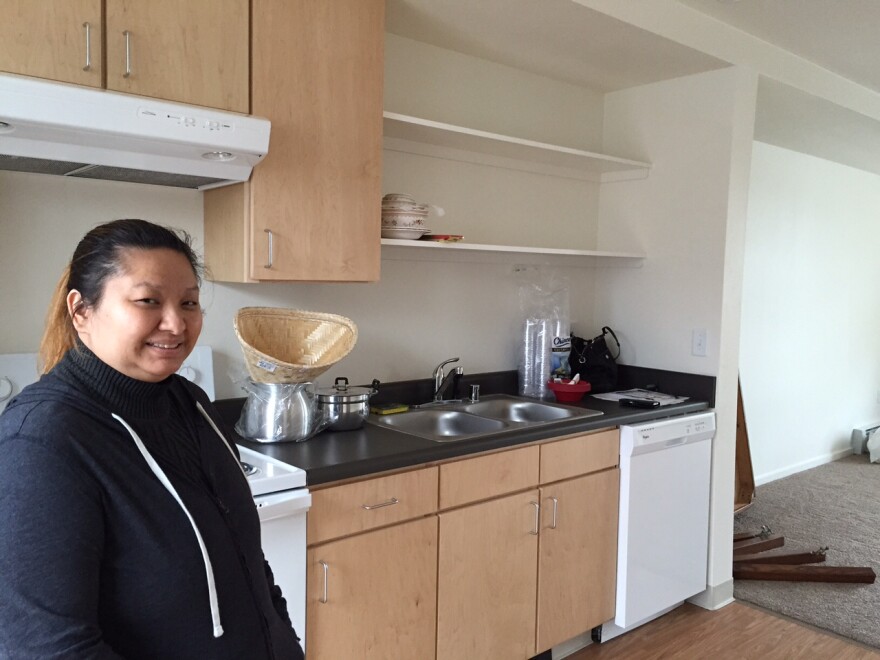Two new affordable housing complexes are opening in Anchorage this fall. Tenants have already started moving into the 18-unit Susitna Square in East Anchorage. But building the developments required much more than construction crews and moving vans.
"Come on up here," invites Mae Lee as she walks up the newly carpeted stairs. "I don't have anything yet 'cause I just moved from Sacramento in maybe like November, and I've been living with my parents."
A table leans against the wall and a just a few boxes are scattered about. For nearly a year, Lee and her three children have been living with eight other people in her mother's three-bedroom trailer.
"It was three of us in one small room," she says. "It was really small. And my son had to sleep on the couch, and sometimes he would sleep on the floor. I felt bad for him."
Lee is a single mom who moved to Anchorage to be close to family when her relationship fell apart. She found work within a month, but it took time to get housing she could afford while raising three kids on her own. Vacancy rates in Anchorage are 3.9 percent. Nationwide, it's closer to 7 percent.
Lee walks through the three-story, two-bedroom, one-car garage apartment fawning over closet space, the new refrigerator, and the chance to have some privacy.
"It's a workout though!" she laughs as heads up to the top floor. "I'll probably lose some weight later on. Going up these stairs."
Lee was one of 150 applicants for the 18 new units. Hundreds more applied for the 70-unit Ridgeline Terrace complex that's under construction in Mountain View.
Bryan Butcher is the CEO of the Alaska Housing Finance Corporation, which owns the project. He says it took three years and a complicated mix of funding to get the projects built.
"It's always kind of amazing that we actually got from where we first talked about the affordable housing to actually moving in because it's so complex to do what you have to do to get affordable housing built in the community," he explains. Building costs and land costs are high in the city.
The two projects combined cost $29.5 million. Butcher explains some of the money came from the usual sources -- grants, tax exempt bonds, and state and federal funding. But another chunk came from a private-public partnership made possible through the Alaska Corporation for Affordable Housing, a subsidiary of AHFC. The units qualify for tax credits because they are low-income housing and because they feature an array of solar panels that cut energy costs by 10 percent. Key Bank bought the tax credits and the money went towards construction. Butcher says that's what made the new developments possible. And the process is repeatable.
"So it's our hope that we're able to be able to do this over and over again, not just in Anchorage but all over the state," Butcher says.
Rent for the units is subsidized so that families pay only 28.5 percent of their income. But it's only for a limited amount of time for families with working adults. AHFC works with clients and case managersto help families manage their finances, improve their skill sets, and transition toward paying higher rents.



